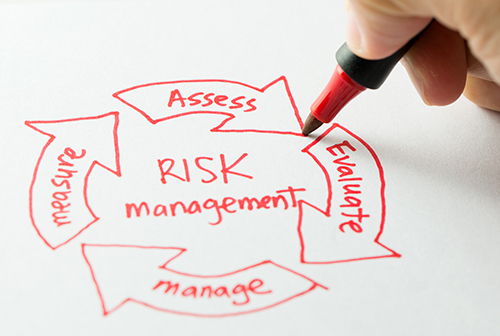

Small businesses have experienced significant impacts since the arrival and persistence of the COVID-19 pandemic. According to the U.S. Chamber of Commerce Small Business Coronavirus Impact Poll, 70% of small businesses worry about financial hardship from prolonged closures, and 58% of business owners are concerned over having to close their business permanently. In the current climate of social distancing, many businesses have had to completely rethink the way they operate. Companies that move quickly to adjust their business plan are best positioned to survive.
With no clear or quick path back to normalcy, the New Year can signal the start of a new approach. Take a fresh look at your business plan to determine which goals need to be adjusted to align with the changing marketplace. Redefine both short and long-term objectives based on client needs and regulations, market analysis, demand, and financial health.
Understanding how your industry has been affected by the pandemic is a critical component. Analyze your competition and industry as a whole and examine trends to identify opportunities. Find gaps or neglected needs that your business can fulfill to reclaim or expand your customer base.
The pandemic has reinforced the importance of adaptation to keep business fluid and able to weather unforeseen storms. Having a plan that encompasses multiple scenarios will portray to lenders, suppliers, and customers that you are serious about protecting and elevating your business. Think outside-the-box to prepare for the worst-case scenario and improve your business's likelihood for success.

Establishing an effective plan to rebuild requires an in-depth look at your current financial position and how the pandemic has impacted your business. Review your credit reports and determine how to protect your credit. Compare financial statements and performance for 2019 verses 2020 and take an in depth look at March 2020 to date, including sales volume and overall profitability.
Most importantly, assess your cash flow. What are your overhead and subscription costs? Identify unnecessary expenses. Understand how your marketing spend has been impacted, especially if you're paying for online marketing when sales are declining.
Consider the post-COVID world. Will you require as much physical office space or will some of your workforce remain remote? Have new processes you've developed increased efficiencies that can reduce spend? Determine if it's best to purchase or lease equipment and whether there may be tax benefits associated with those decisions. This will help you to identify methods to increase cash flow and working capital needed to kickstart your recovery plan. It's critical to assess each dollar spent to get a better perspective on how you're using the cash coming in during this challenging time.
To move past the COVID-19 pandemic may require a substantial investment. For instance, hiring and training new employees or rehiring those laid off, acquiring inventory and ramping up advertising to start building fresh buzz will require expenditures. As part of your coronavirus recovery, you should have a clear idea of what you need to budget for and what you can cut to make the most of any revenue stream. Eliminate monetary waste and get your operating budget as lean as possible so that if there's an opportunity to invest in growth, you can take advantage of it.
It remains unknown when the pandemic may end, which makes setting a timeline for your business to return to normal even more important. Map out a timetable that prioritizes your most important actions. These may include securing business funding or getting invoices paid, rehiring employees, and purchasing supplies and materials. If your business closed as a result of the pandemic, you'll of course need to determine when to reopen your doors.
As you take individual steps toward recovery, it's important to track your progress. This is particularly critical if you secured capital to fund your business. You don't want to waste precious time on activities that aren't delivering a solid return on your investment. In the initial stages of recovery, you may need to keep a close eye on and be actively involved in daily operations to see what's working and what's not. As things begin to stabilize, you could transition to reviewing your business financials monthly.

Small businesses anticipate the worst of the pandemic is still ahead according to the Q4 2020 MetLife & U.S. Chamber of Commerce Small Business Index (SBI). Poll results indicate half of small businesses foresee operating for a year or less in the current marketplace before having to close their doors. With the surge in COVID-19 cases across the nation, 62% of small businesses fear the worst economic impact is still to come. 74% of small business owners say they require further government assistance to stay afloat. Minority-owned businesses are being hit hardest as the percentage increases to 83%. According to the poll, a mere four in 10 (40%) of small business owners believe they can continue operations without being forced to shut down permanently.
"The impact of coronavirus continues to take a devastating toll on America's small businesses. In fact, half of them say they can operate for a year or less before closing permanently." Neil Bradley, Executive Vice President and Chief Policy Officer at the U.S. Chamber of Commerce.
While the coronavirus pandemic may seem like a once-in-a-lifetime event, it's wise to use what you've learned to prepare for another crisis and protect your business from future shocks. Building up cash savings may be a priority, or you may elect to focus on paying down debt and trimming nonessential spending to keep your budget on track.
There are numerous resources available to help you determine the right strategy to set your business up for success. If you're one of the many American business owners who are rethinking business operations, below are examples of websites and government programs that can be helpful.
---
Ascentium Capital is committed to supporting businesses nationwide and has continued to lend during the COVID-19 pandemic. If your business needs equipment, technology or a working capital loan, contact us today to learn how much you may qualify for. Financing based on credit approval.
To get started, simply fill out this quick form and a finance manager will contact you to discuss your business financing needs.
